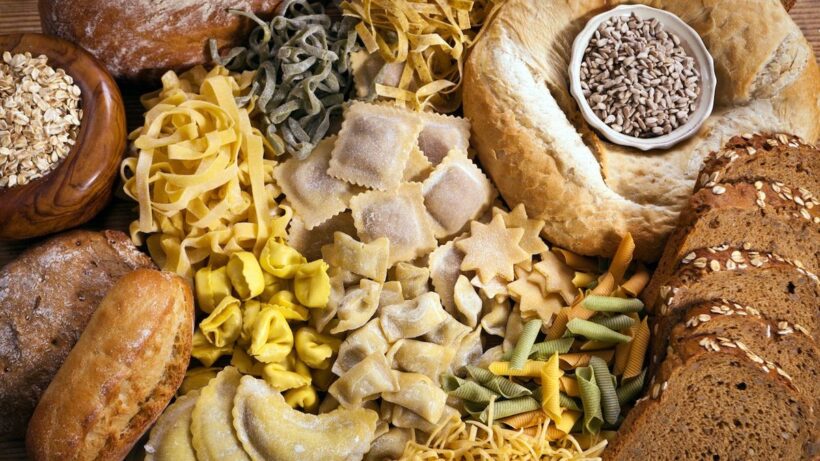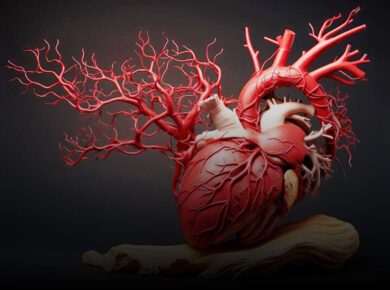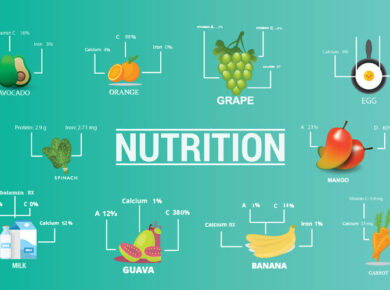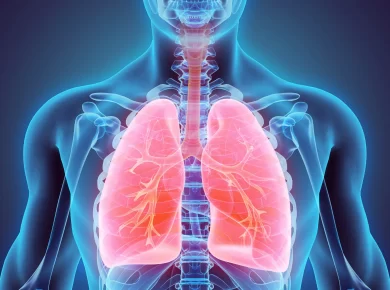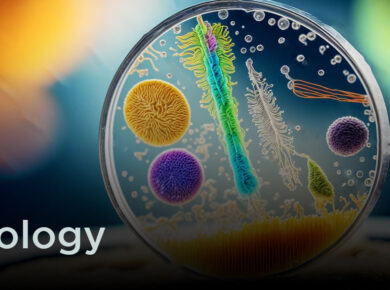Carbohydrates
Carbohydrates may be classified as monosaccharides, or polysaccharides depending on the number of monomer (sugar) units they contain. They constitute a large part of foods such as rice, noodles, bread and other grain-based products.
Monosaccharides, disaccharides and polysaccharides contain one, two and three or more sugar units respectively. Polysaccharides are often referred to as complex carbohydrates because they are typically long, multiple branched chains of sugar units.
Traditionally, simple carbohydrates were believed to be absorbed quickly and therefore raise blood-glucose levels more rapidly than complex carbohydrates. This, however is not accurate. Some simple carbohydrates (e.g. fructose) follow different metabolic pathways (e.g. fructolysis) which result in only a partial catabolism to glucose, while many complex carbohydrates may be digested at essentially the same rate as simple.
Related Article: Nutrients
Fiber
Dietary fiber is a carbohydrate (or a polysaccharide) that is incompletely absorbed in humans and in some animals. Like all carbohydrates, when it is metabolized it can produce four calories (kilocalories) of energy per gram. However, in most circumstances it accounts for less than that because of its limited absorption and digestibility. Dietary fiber consists mainly of cellulose, a large carbohydrate polymer that is indigestible because humans do not have the required enzymes to disassemble it.
There are two subcategories: soluble and insoluble fiber. Whole grains, fruits (especially plums, prunes and figs) and vegetable are good sources of dietary fiber. There are many health benefits of a high-fiber diet. Dietary fiber helps reduce the chance of gastrointestinal problems such as constipation and diarrhea by increasing the weight and size of stool and softening it.
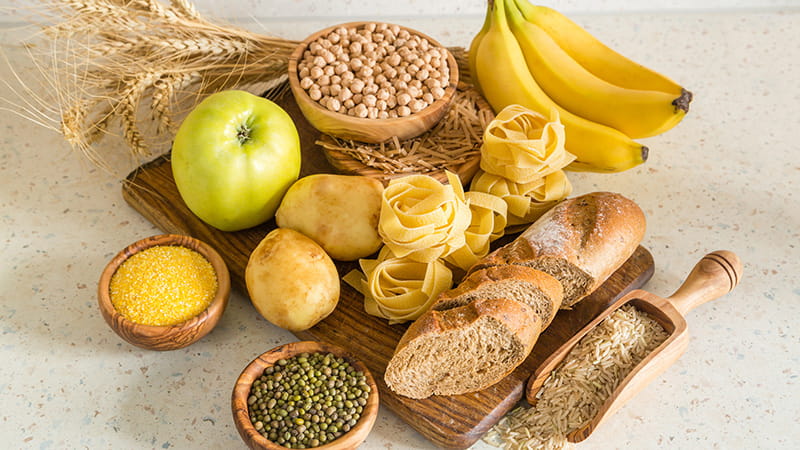
Insoluble fiber, found in whole wheat flour, nuts and vegetables, especially stimulates peristalsis – the rhythmic muscular contractions of the intestines which move digest a along the digestive tract. Soluble fiber, found in oats, peas, beans and many fruits, dissolves in water in the intestinal tract to produce a gel which slows the movement of food through the intestines. This may help lower blood glucose levels because it can slow the absorption of sugar.
Additionally, fiber perhaps especially that from whole grains is thought to possibly help lessen insulin spikes and therefore reduce the risk of type 2 diabetes. The link between increased fiber consumption and a decreased risk of colorectal cancer is still uncertain.
Fat
A molecule of dietary fat typically consists of several fatty acids (containing long chains of carbon and hydrogen atoms), bonded to glycerol. They are typically found as triglycerides (tree fatty acids attached to one glycerol backbone).
Fats may be classified as saturated or unsaturated depending on the detailed structure of the fatty acids involved. Saturated fats have all of the carbon atoms in their fatty acid chains bounded to hydrogen atoms, whereas unsaturated fats have some of these carbon atoms double-bounded, so their molecules have relatively fewer hydrogen atoms that a saturated fatty acid of the same length. Unsaturated fats may be further classified as monounsaturated (one double-bond).
Further more, depending on the location of the double – bond in the fatty acid chain, unsaturated fatty acids are classified as omega-3 or omega-6 fatty acids. Trans fats are a type of unsaturated fat with trans-isomer bonds; these are rare in nature and in foods from natural sources; they are typically created in an industrial process called (partial) hydrogenation.
There are nine kilocalories in each gram of fat. Fatty acids such as conjugated linoleic acid, catalpic acid, eleostearic acid and punicic acid, in addition to providing energy, represent potent immune modulatory molecules.
Saturated fats (typically from animal sources) have been a staple in many world cultures for millennia. Unsaturated fats (e.g. vegetable oil) are considered healthier, while trans fats are to be avoided. Saturated and some trans fats are typically solid at room temperature (such as butter or lard), while unsaturated fats are typically liquids (such as olive oil or flaxseed oil). Trans fats are very rare in nature, and have been shown to be highly detrimental to human health, but have properties useful in the food processing industry, such as rancidity resistance.
Essential fatty acids
Most fatty acids are non-essential, meaning the body can produce them as needed, generally from other fatty acids and always by expending energy to do so. However, in humans, at least two fatty acids are essential and must be included in the diet.
An appropriate balance of essential fatty acids – omega-3 and omega – 6 fatty acids – seems also important for health, although definitive experimental demonstration has been elusive. Both of these “omega” long-chain polyunsaturated fatty acids are substrates for a class of eicosanoids known as prostaglandins, which have roles throughout the human body. They are hormones, in some respects.
The omega-3 eicosapentaenoic acid (EPA), which can be made in the human body from the omega-3 essential fatty acid alpha-linolenic acid (ALA), or taken in through marine food sources, serves as a building block for series 3 prostaglandins (e.g. weakly inflammatory PGE3). The omega-6 dihomo-gamma-linolenic acid (DGLA) serves as a building block for series 1 prostaglandins (e.g. anti-inflammatory PGE1), whereas arachidonic acid (AA) serves as a building block for series 2 prostaglandins (e.g. pro-inflammatory PGE2). Both DGLA and AA can be made from the omega-6 linoleic acid (LA) in the human body, or can be taken in directly through food.
An appropriately balanced intake of omega-3 and omega-6 partly determines the relative production of different prostaglandins, which is one reason why a balance between omega-3 and omega-6 is believed important for cardiovascular health. In industrialized societies, people typically consume large amounts of processed vegetable oils, which have reduced amounts of the essential fatty acids along with too much of omega-6 fatty acids relative to omega-3 fatty acids.
The conversion rate of omega-6 DGLA to AA largely determines the production of the prostaglandins PGE1 and PGE2. Omega-3 EPA prevents AA from being released from membranes, thereby skewing prostaglandin balance away from pro-inflammatory PGE2 (made from AA) toward anti-inflammatory PGE1 (made from DGLA). Moreover, the conversion (desaturation) of DGLA to AA is controlled by the enzyme delta-5 desaturase, which in turn is controlled by hormones such as insulin (up-regulation).
The amount and type of carbohydrates consumed, along with some types of amino acid, can influence processes involving insulin, glucagon and other hormones; therefore the ratio of omega-3 versus omega-6 has wide effects on general health and specific effects on immune function and inflammation and mitosis (i.e. cell division).
